2023: It Was a Year, and It Happened
By jeffrud 1 Comments

In 2005, I boarded a plane in Honolulu with a group of Lutheran teenagers en route to Seattle. I was a teenager, trying to figure out how romantic relationships worked and actively wondering if I bought into the Lutheran church as an institution anymore. Katamari Damacy was still new and fresh and it was my favorite game.
We were hosted by a small Lutheran liberal arts college in Tacoma for a few days prior to the larger youth gathering in Seattle. I fell in love with the school. Living in Seattle was something I had become interested in years prior, having spent most of my childhood growing up in the empty prairies of the central United States. Seattle was where Nirvana was from, I knew, so it must be cool. This Lutheran college, coupled with my pretty good grades, was going to be my ticket to the Pacific Northwest. I applied to precisely one college, and fortunately was accepted into the welcoming arms of Pacific Lutheran University.
I drove from Texas to Tacoma with my father in 2007. This is one of my most cherished memories. It will be with me long after he is gone. Just five days of driving through staggering, haunting beauty across the American southwest, then up through the whole of California and into the blue/green/gray landscapes of Oregon and finally Washington. We set my single day driving record on that trip, covering 880 miles between two hotels.
To add to the inherent drama of this telling, it was on that trip that we made a stop in San Diego to meet a friend of mine I had met on the Internet, originally in a Final Fantasy role playing blog community. My parents were a little trepadacious, as were hers, but through some direct communicating and putting the concerned parents into contact everybody came to understand that this was not in fact the beginning of some horror tragedy situation. It was just two young people who wanted to meet in person after talking for a few years online and through letters. This friend of mine introduced me to some friends of hers who were then dating, then took me to a city park to take in the greenery, then to the airport to play a rousing game of "guess which of these random people are secretly spies", and then the next morning we were on our way north.
I am now married to this friend, and the two people she introduced me to that night are now some of the closest friends I have. One of them lives nearby, and I was back in San Diego last November to see the other get married. So, yeah. Big times.
I write this all out here because I'm writing this from a cafe on Garfield Street, the two block neighorhood off campus which I have been orbiting since 2007. This was my home nest, my den, for four years of transformative college and young adult experiences. I didn't play a lot of video games in college so Katamari Damacy remained my favorite, though it faced some early competition from Portal and Guitar Hero. I've come here a few times a year ever since graduating out of sheer self-serving romanticism, and the last couple GOTY posts by yours truly were done in the coffee shop on this street which has changed hands almost half a dozen times in nearly 20 years.
This feels different now because it will probably be the last of these posts I write from my nest.
#########################
I'm going to be honest here, there's a version of this post where I alternated the games stuff with what amounts to my entire life testimony of my time in the Pacific Northwest. It's very personal and like all very personal writing it is also very much not exciting to read. Here's what I'm going to say instead.
I attended undergrad in Tacoma and fell in love with this city. I've told people for years my ashes will be scattered here. I attended grad school at UW and fucked up very badly with that entire plan, but while trying to drop out like a normal burnt out person my supervisor (who had worked in the department for forty years) announced his retirement and I was offered a portion of his duties to help the department limp on for a while. This morphed into a fulltime job which paid quite well considering the circumstances, and in this milieu my Final Fantasy friend from San Diego moved to Seattle and we eventually, finally wound up dating. The job just became something I was stuck with, despite the horrible commute and the slow rolling realization that I hated almost every aspect of it.
The job funded us through my spouse's grad school, through buying a house, through a global pandemic, and through various tribulations until I had what I am going to describe as a nervous breakdown last year. Numerous physical and mental health professionals told me I should consider making changes, and I finally accepted this advice in October and ended what was probably the best opportunity I will ever, ever, ever be handed in my life.
Amidst this, for a laundry list of reasons which I'd tell you about if we were Really Great Friends (some of you are reading this and I really appreciate your help this last year specifically), we started actively considering a Pretty Big Move. Details, details. This move is now a 99.9% certainty, and has some massive ramifications on my life going forward. I look forward to talking more about this.
Also in the near term, while I have been hunting for jobs now for a few weeks, the plan was that my spouse would be able to float us as I was able to support us while she was not working for periods during grad school. That plan turned out to be a gamble on her place of employment not imploding, which is precisely what has happened. We've got plans, but we are now squarely in Plan F or G territory when we sure would have preferred to be on Plan B or C at this point.

(Edit: Turns out I tested positive for COVID not long after this was written. Huzzah.)
All of this is to say, as I sit here writing this all out in the same library I once visited as a sixteen year old kid, is that the last year was not one where video games were much of a priority. When I sat down to count the games I actually finished this past year, I was surprised that the number broke 30. If that's the bar to clear for 2024, I'm not optimistic about clearing it. As for what I spent most of my time playing, you'll have to read on!
Anyway, this is all rambly and awful and I'm posting it to the fucking Giant Bomb blog section where a few dozen of us still lurk. About the most self serving thing imaginable, really. But then again, that's video games. I play them because I like the way they make my brain feel. I probably always will. I do think my relationship to video games is changing, just as my relationship to this physical space is going to be fundamentally changed soon. Just forcing up a bunch of nostalgic pap is all.
Let's just do this and go home. Okay then.
Oh yeah, there was going to be a fun recurring framing device about Katamari Damacy woven through this thing. Suffice to say it is better than every game listed below, by varying degrees.
Also, a note on time: I have perhaps never cared less about linear time than I have in the past year. Most of the games on this list are not from 2023. A few of them are. If they just stopped making games for a few years I'd get all caught up. Oh well.
####################################
Best Surprises
The Outer Worlds
For some bizarre and unarticulatable reason this specific past year, my spouse and I had a hankering for a big open world first person game that let you build up a crew of interesting characters to fill out a space ship that takes you from one interesting location to another while telling an at least passable story. Weird! I know we played this for a while around launch and bounced off, but I say again by some strange turn of events this wound up fitting a very specific niche. I have issues with the game, but I think those are as much me being tired of Creation Engine feeling games as anything else. Sometimes the Best Surprise is just being surprised at how much your relationship to a thing has changed over time, and with perspective, hint hint.
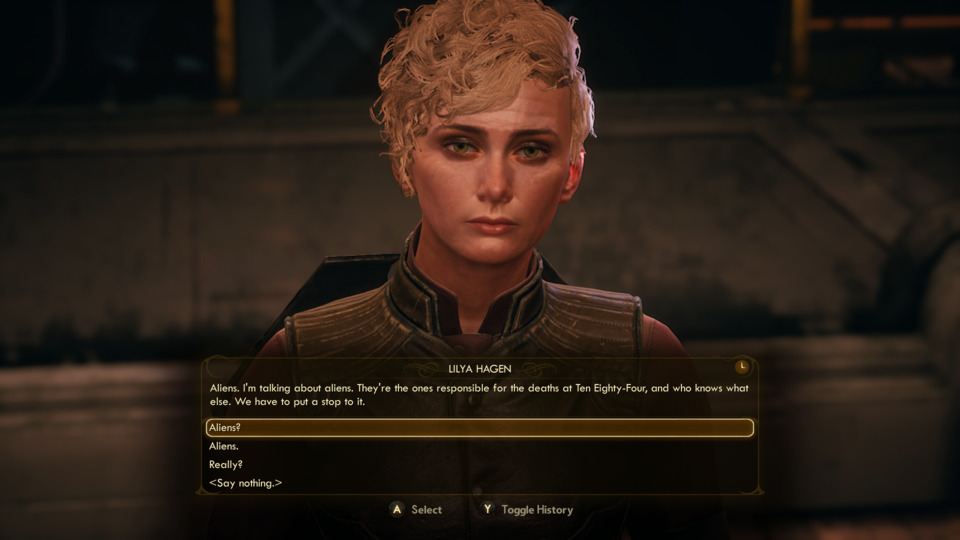
Stranger of Paradise: Final Fantasy Origins
I finished a Soulslike-like game for the first time! It has nu-metal and fedoars! It manages to enhance the lore of one of my favorite games in the Final Fantasy series! What the hell? My only regret here is I played this on easy to just Get To The Lore, and that wound up making what seems like a pretty beatable and player-friendly experience into an absolute cake walk. I also think this game has one of the worst inventory systems I've seen in a game. Just an endless stream of plus 1% shoestrings and shit. You can carry hundreds of meaningless new hats and crap and you'll use an infintesimal fraction of them. But on the other hand, an unrequited fistbump leads to a man named Jack Garland setting up the intro to Final Fantasy I. So.
Madden NFL 08/NCAA Football 08
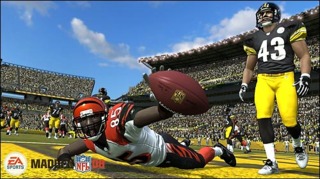
Well, here it is. My most played game(s) of the last year. I went into some real deep depression wells throughout 2023, and after waking up from a fugue state I realized that I had built two dozen custom football teams. I had replicated the entire CFL, complete with current and historic uniforms. I founded Ryukyu University, saw them admitted to the WAC, go 6-6 in their first season while knocking out #24 ranked Boise State in the season closer and losing the New Mexico Bowl by 4 points. I then played out an entire NFL season as the BC Lions, pulling off a blistering 4-12 while playing the trade market well enough to pick up a few extra draft picks, and anyway yeah I played a lot of these games. More than I like to admit. I played a lot of Madden on the PlayStation 2(tm) in my youth. Sometimes retreating into the fallowest nostalgia is what is necessary to calm a brain.
################
Worst Experiences
Various Congo Bongo ports
An undercurrent of my video gaming year has been a steady descent into RetroAchievements madness. I've made it a sad, sick, sadistic little goal of mine to at least touch every game and port of said to which I have some claim of ownership, with the intent of farming as many of these pretend points on a silly website as possible. Hit me up and I'll share my account and we can make numbers get bigger, together!
Anyway. Congo Bongo isn't great shakes in its original form. In fact it mostly exists as a petty little spat between Nintendo and Isegami Tsushinki over Donkey Kong, which was actually programmed by the latter. Isegami Tsushinki was more than happy to develop an arcade game which also featured a large ape but represented a technological leap over Nintendo's game. It's okay. However! It has some home console ports that stand as some of the worst things I've played. The SG-1000 port, which was basically a launch title for the platform, is a sad little port job. Two of the levels are missing, as is the arcade isomentric perspective. The platforming in the sceond level is a damn mess due to the new weird slightly shifted perspective.
At least it isn't the VCS port. This version is also missing two levels, but for reasons only known to the gods and the programmers there was a noble attempt to preserve the isometric perspective here. The first level works alright, but the second is a just a disaster. I have seen videos of people completing it, which is the only reason I believe it is even possible to complete. The perspective is baffling, the original version's path of platforms is largely placed with floating targets, and your jump is just stiff enough to make this miserable beyond words.
Soccer for the NES
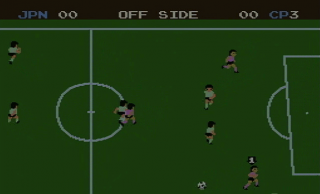
I like soccer. I do not like Soccer. Primeval sports games are a fine place to go if you're looking for a confusing and often wretched few minutes. Soccer for the NES fares worse than most of its black box sport-ish peers for just how limited it is. The game barely feels like soccer. It's a five on five game on a tiny field, which generously puts this in arena soccer territory but without walls that are in play, which automatically makes it worse. Arena soccer is rad as hell.
Right, this game. the dribbling animation is this awkward little kick in front of the player fielding the ball, which looks exactly as stiff as the game of soccer is not. Shooting is governed by moving a cursor up and down the opposing goal with the directional pad, which you are also incidentally using to maneuver your player. I find this to feel terrible. What is truly wild is you can elect to play this with 45 minute halves, which take about 9 minutes to play out. I don't even think the second player bump that all of these games get would overcome that much NES Soccer.
Yuuyuu Jinsei
This game was so bad it sorta derailed HuCARTography, along with general life bullshit. It's just a video game conversion of The Game of Life. The issue is, The Game of Life is one of the worst things we've ever done as a species. I hate it with all of my being, and I hated this game in turn. Just read my thing about it. Suffice to say I've been wondering lately if it, LocoCycle, or Surfing H3O is the single worst game I've finished. It's in rarefied air. The kind of air that gets trapped in a butt that makes a fart, haha! Fuck Yuuyuu Jinsei.
###########################
Honorable Mentions
Citizen Sleeper
Alright I know a lot of you played that very big RPG this year with the dice rolls and the fucking and whathaveyou. Well I didn't because it only came out on my couch-friendly platform for me a few days ago now, and at this point I'm working on a map of local food banks so I'm not buying that thing. But I did play Citizen Sleeper, a game which deals with some Big Problems and Big Themes using dice while also not overstaying its welcome. I appreciate the choose your own adventure nature of this game a lot. It's cool!
F-Zero 99
If you had told me at the beginning of the year that I'd be getting a followup to my favorite SNES game I would have probably called you a liar. I also would not have expected a Battle Royale style experience, and yet. And yet. Boy howdy, there are some people playing F-Zero 99 online right now that will make your punk ass wish you had not gotten out of bed that day. Wish you hadn't been born. Wish you hadn't paid Nintendo $20 at some point in the last twelve months so you could be fed your own teeth by somebody named ~~joseph43~~ on Nintendo Switch Online. Game's good though. I may never get a top ten finish when it counts but I'll take making the top half most of the time.
Starfield
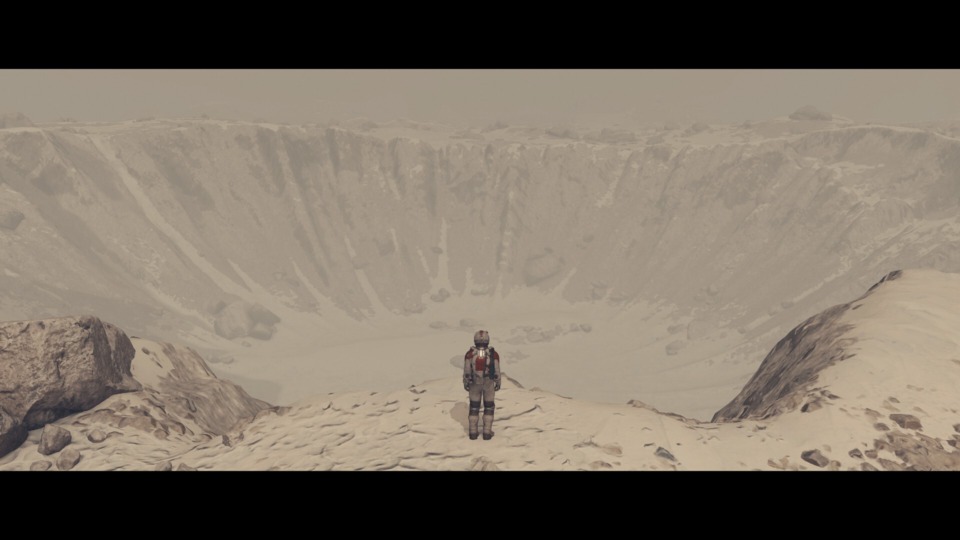
Shit.
Okay, I have to write this out. This was supposed to chum the wife, at least as a homeopathic Skyrim substitute thing while the next Elder Scrolls is mind palaced, and in that respect Starfield is one of the more complete failures I have seen in some time. Skyrim worked, I would posit, on the Major Strength of a completely frictionless game which invites you, goads you even, into trying and doing everything. You can live out the monomyth of the wizard stealth archer with invincible dog companion who never initiates the quest that spawns dragons forever, just picking flowers and eating child sized wheels of cheese to your heart's content. Its Minor Strength is a cast of characters who have, for better or worse, become "iconic". Going back to that game and hearing the same three or four voice actors changing out hats and fake beards for every character, spouting their little canned lines in their city block sized towns and hovels, remains somewhat charming. It lacks the sheer robotic energy of Oblivion's version of the same thing done, arguably, better despite the technological limitations. The whole thing winds up being Soft, and Cozy, and Hyggelig.
The third thing Starfield asks a Skyrim worshipping fanbase is to play a simplified version of Star Wars: TIE Fighter. You then meet a procession of the most dishwater dull, poe faced saps in the entire universe (who are bankrolled by a weapons company CEO! he's just whitewashing his fucking reputation! what the fuck!) who just seem very excited that Space Is Big And We Can Go To It Wowee. These people, sadly, are also the ones with the most writing and they also pay better than most of the other work in the universe.
The moment I knew Starfield was going to be a deeply compromised experience for me was watching my spouse play the first five hours. She gave her character traits which are BY THE WAY the best idea in this game, they're free friction that you can apply right up front that give flavor and role playing footholds to a very large cliff face. One of those traits was, in essence, "I'm kind of a shit to my ship's crew which has some penalties but they always perform better as a result". Not earth shattering but it's something. After completing the "leave one featureless rock to fly to another before going to the worst mapped city in the history of Bethesda's video games and buddy that's saying something" tutorial, she found a Vague And Inoffensive General Space Religion Temple in Space Canada City. The second dialog option with the VAIGSRT Priest was "I sure feel about about being a piece of shit to my crew". She selected it, and the priest's response was "Oh that's alright lil bud, wanna get rid of some of the only role playing in this game? It won't cost you a dime."
You can just get rid of your traits.
I started a character named Sludgeworth. I've played 80 hours of the game. I upgraded my ship licensing to pick up more people in a desperate attempt to find any interesting persons in THE FUCKING UNIVERSE and keep them around. I built an interstellar logistics network to manufacture complex goods as a moneymaking scheme. I joined the only future corp in the One Good Town in the game, to discover it is I shit you not just some warmed over thieve's guild shit. After dozens of hours of trying to play as a shitty, balding, money grubbing capitalist Lee Van Cleef motherfucker I said fuck it and started doing the main quest. Buddy, Constellation is the most boring assembly of milquetoast saps in the universe but they're also turbo mode for making money. Just fly to empty rocks, scan said constituent rocks and the occasional shambling mound monster, and wham! there's a few thousand credits. Then I did my first temple thing, which I'm sure somebody thought was Very Cool, but I Would Disagree. Floating around toward Christmas tree lights was neat for maybe the first three times. I don't know what brain genius thought it would be better if you needed to repeat this fallow action about a dozen times, but nevertheless You Do. I was then given a Skyrim Shout menu (called it as soon as I saw that radial menu system had a big ol gap up top), which purportedly lowers gravity in an area.
So naturally I leave the temple, use this shout(tm) on my companion about ten feet from me, and it effects her zero percent. I try to jump, and it effects me zero percent. This power doesn't do anything? Oh, does this just work on enemies? Cool, lemme pull up the six menu layers it takes for me to get fast traveled to a place where they probably spawn, or I could use this same menu to fast travel to where this wretched mission must be turned in at my Vaguely Colonial Clubhouse in Space Canada City and fuuuuuuuuuuuuuuuuuuuuuck.
Having said all of that. There are things in this game which I found fun. My shitty capitalist is a gun pervert and modifying a range of pistols into lighweight, silenced instruments of fucking murder has been surprisingly good on my brainstem. Building out my space logistics network to make some sort of perverse widget out of other widgets is about as close as I've ever been to being a Minecraft deviant. I think the space combat is alright, though I honestly wish it leaned even more into complex flight mechanical stuff. But as you've gathered, I wish a lot of things in this game were different. It doesn't have enough cruft to be Elite, and it has entirely too many bizarre choke points to even sniff Skyrim.
Somebody I deeply respect from this site made a Daggerfall comparison with this game and I do think that's apt. I also think the game is Not Bad. It's just got a vastly more limited audience than one of the best selling, most exposed games of all time and feels like it was made in part for its own creators. I also wonder if it says more about me than anybody else that I can't fully give myself to Starfield.
####################################
MY VERY COOL TOP TEN GAMES OF MY LAST YEAR *AIRHORNS*
10. Jet Set Radio
Chalk up another entry in the Jeff's Fiscally Irresponsible Video Game Habit series here. There are a few decent routes for normal people to play Jet Set Radio in $current_year, including the version on Steam that they've had on sale for literally no dollars and no cents several times. The game is playable on a Series X in digital form even. That version of the game, however, has two big drawbacks.
- It is not playable on a kiosk model of a Sega Dreamcast with a big honking heatpipe straight from the factory, which you have paid to have modded with a new fan, a recapped power supply, and which you have modded by hand to use a MODE drive emulator which contains the entire cannon of Good Dreamcast Games and several dozen others besides.
- It is missing two tracks from the original soundtrack, which as you probably know is an all time great. This is made up for, in some sense, by including tracks from all the regional variants in one game so you kinda get more JSR music than you even had from the jump? Still kinda stinks but there's a reason this isn't the primary drawback in the list.
(NOTE: I've since discovered this was delisted from Xbox platforms in 2023 and I missed my window to buy it. Shit.)

I've glibly described some games as "style exercises" as a shorthand for a very long time now. Jet Set Radio might be the greatest style exercise of all time. It captures Turn of the Willennium energy, crystalizes it, and animates it perfectly. Just skate around on sick cel shaded levels, tagging walls with art your middle school mind could only begin to fathom the coolness of, to a smorgasbord of the most unhinged J-rock soundtrack conceived of to that point. You know your soundtrack is great when you can just copy-paste most of it into the sequel and it still winds up being an all timer there as well.
The warts basically amount to some prescriptive boss fights, a few frustrations navigating levels finding things, and the lack of a second stick on the Dreamcast for tolerable camera controls. Even with those, we're still talking about one of the best games on the system.
(cw: the next three entries are all from the same franchise)
9. Theatrhythm Final Fantasy: Final Bar Line
It is public information that I do a recurring podcast series with @zombiepie and @thatpinguino. Some time ago I told these boys that we should really play Theatrhythm Final Fantasy: Curtain Call for the 3DS. @thatpinguino balked as he doesn't own a 3DS. To that I now say, pound sand! You can now Theat some Rhythm on your PlayStation(tm) family of consoles as well as your Nintendo Switch(tm)! And it's not much worse than the 3DS version!
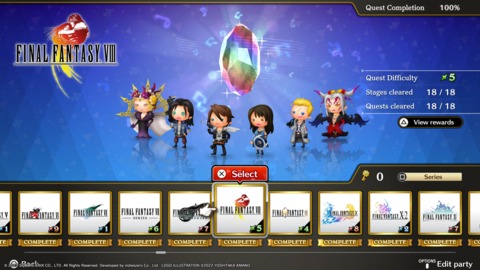
To get my gripe with this game out of the way first, this game's worst feature (beyond its pricing and DLC scheme) is the structure. Curtain Call on the 3DS allowed you to dive in and play tracks at will, and handed you quests where songs were mixed and matched together. It was a bit more jazz. Final Bar Line's structure is altogether far too rigid, locking you into one game quest silo at a time and locking off others until you hit some arbitrary feeling points into each of those silos. The quest difficulties also range in a bizarre arrangement across games; structurally the game encourages players to start with "easier" games like Final Fantasy VII or, umm, Final Fantasy II before heading into "hard" games like FFVI and FFXIV. Shoutout to that last one in particular for having a quest series that is dozens of songs long, versus something like FF Tactics that has about seven tracks in total.
Structural issues aside, it's still a fantastic controller based rhythm game. It gets pretty darn hard as well! In addition to the 3DS entries' "tap on icon" and "drag icon with stick" tricks, Final Bar Line introduces multi-press keys which require you to occasionally hold one button while tapping/holding another. The higher difficulty levels of this game are absolutely brutal, and you are also under zero pressure to pursue those. If you simply want to tap along to the Mobius Final Fantasy soundtrack (for some reason) (you weirdo) you can merrily do that.
Maybe the worst thing I can say here is I just prefer the control layout and inherently less input sensitive nature of playing this on the 3DS and its discrete, integrated hardware versus the latency minefield of PS4 into sound receiver into projector with controller latency added for good measure. Still a great time though.
8. Final Fantasy III

As mentioned above, I met my goshdarn wife via the magical world of the Final Fantasies and regularly spend hours of recorded time discussing this series with friends. I love these games. Mostly. I've touched most of them, and spent a good deal of time with every one of them. Until this year though, Final Fantasy III was probably the least explored of these. Of course in my headiest days of discovering emulation I wound up with a few different fan translated patched versions of the Famicom game on my Sony Vaio(tm) with Pentium 4(tm) processor. I also owned the DS conversion thing at some point, long since traded away or lost. But neither of those excursions lasted more than a few hours.
I've now played this game to completion and, moron that I am, own two copies of its shiny Pixel Remaster(tm). I can confidently say that, of Final Fantasy games designed for the FC/NES spec, it is my second favorite. It feels like a dress rehearsal for the principle creative minds behind the series, working alongside a singular genius programmer in Nasir Gabelli for whom this wound up being basically a final huzzah on the platform and in the broader industry. The job system is here and it is barebones as hell, though it does lead to a lot of space for "expressive" gameplay as the kids call it these days. A few portions of the game are a bit to prescriptive to allow for a full range of options (though there is space for Horii's Path of Grindage to overcome these as well), and let me tell you about that last dungeon being a bunch of bullshit. The Pixel Remasters allow for quicksaving, but in fact that quick save is functionally a "save anywhere" feature in all but name. The original game lacked this, expecting you slog through effectively two (maybe three) Final Dungeon Hard dungeons without saving or restocking supplies at any point. And that's terrible. Did I abuse this feature to get through the game? You bet your sweet ass I did! There was a point in my life where I would have considered this to be dishonest or somehow Bad And Wrong, but there were times where I thought meerkats were called "meekrats" and let me tell you, those times persisted a lot longer than I would like to admit as well.
The game is full of JRPG grinding and good sprites and some of the best Famicom music from one of the seminal composers of the medium. It is also crusty, occasionally obtuse, and has ideas that were done better elsewhere; hell, Final Fantasy I has a job system **basically** and I think that game is better than this one despite being a hell of a lot simpler on paper. Obviously Final Fantasy V contains the purest statement on this FF jobs concept as well. What's wild is just two years separate FFIII and V. What a special company, and what a white hot streak they had from 1990 to 2001 or so.
7. Final Fantasy XII: The Zodiac Age
Now I'm not going to lie, I am a bit surprised to find myself putting this game in this spot on this list myself, But when I consider moving it any any direction, including right off the bottom, my gut response is a hard NO.
I feel a strange kinship with this game at this point. It wound up intersecting my life in some peculiar ways. You know, the life that I can't stop writing about in the margins of what is a normal top ten gamez i like this year lol listicle thing. I resonate with Matsuno and the feelings of burnout and exhaustion which ultimately drove him off of this project. The game was shepherded into a sellable form by Akitoshi Kawazu, a man responsible for one of my least favorite games and a few others I would really like to play for myself. You can see the Kawazu in this game with its absolute bullshit treasure drop system, and you can see the flamed out Matsuno in the overly ambitious story. In between these poles is a really interesting RPG which attempted to square an impossible circle: a single player MMO that is not 100% butt. It gets close!
There's also the PS2 angle to this whole thing. I think if we all sat together and, as Plutarch suggested occurred amongst leaders of the Greek city states of old, had a vote as to which is the greatest video game console of all time, I think most of the ballots would look like this:
- First console/Sentimental choice
- The Sony PlayStation 2(tm)
And a fair amount of ballots would look like this:
- The Sony PlayStation 2(tm)
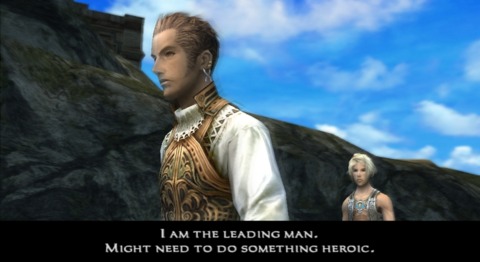
The PlayStation 2's lifetime neatly contained my entire adolescence, teenage years and, due its insane longevity, my entire time in college including grad school. Discounting FFXI expansions, Final Fantasy XII was the final statement of the series on the best selling console of all time to this day. And even if we live in a world where the PS4 went onto outsell it (not possible anymore) or the Switch does (still possible!) FFXII is playable on both of those systems as well. I wound up playing a bit of XII in college, but at that point my video game time and interest was at its nadir and my time was mostly spent whipping through COD campaigns or writing very exciting papers on Unit 731. But I remember this game as the last huzzah of the PS2 in general (never you mind Persona 4, God of War II, latter day FIFA, etc) and that will carry a very literal nostalgia with it for me personally.
(I also wound up playing and beating this game on the Switch after poking it throughout the pandemic, so this game is now tied in with memories of those dark times as well)
The game itself is fine! The Matsuno shines through in its relatively complex and written villains, its ensemble cast (Vaan and Squeenix meddling be damned), and its relative inscrutability compared to the prior X entries' "stand across from the goblins and select Attack" approach to the JRPG. Some people hate, hate, hate that the game boils down to writing AI scripts of out purchasable, constituent pieces. I did not hate this! It is strange that, of all places, the most FFXII pollenation I've seen outside of this game is in the Dragon Age series with its party scripting tools. Mastering this system turns your party into a very cool dervish of murderous sexy rabbit and dollar store Han Solo types plus a rotating third.
It's just a shame that so much of this game is an Actually Good Story, Actually spread entirely too thin over enormous zones full of grindage and, again I must say this, some of the most anti-player treasure/loot drop stuff ever conceived by man. The horrible crystal dungeon toward the end of this game is drizzling shit bad. But there's a lot of great stuff surrounding that dungeon! I like this one a lot!
6. Panzer Dragoon Saga

I know, this probably feels a little low.
As somebody who owns a physical copy of this game (loose but all the same very real) and who is in a position where I am actively considering selling just to support my family in the near term, I wish Sega would put in the time and effort to reissue this game in some form or another so more peope could experience it. Not necessarily because it is some shining and perfect masterpiece, which it is not, but because I think the game's actual merits have been completely occulted by talks of its rarity and aftermarket value.
Ol' Azel: Panzer Dragoon RPG here isn't even a late model Saturn game, really, considering that system had games for most of another two years in Japan. It is, however, a fantastic role playing game with some production touches that games in the genre wouldn't touch for another console generation. A fair amount of the space on its four disks is dedicated to fully voice acted rendered video clips, and another chunk of each disk is dedicated to the fully voice acted in-engine content. The first disk in particular has an indulgent amount of video, setting up its plot built around one young person's desire for revenge and to learn more about the cute robot girl that was pulled out of a cave. As the story progresses you are presented with a combat system which manages to marry the gameplay of Panzer Dragoon with the workings of a turn based Japanese role playing game, and a soundtrack that at its peak punches with the likes of Chrono Cross.
However, while I'd venture to call the first disk Literally Perfect and while the second disk has some incredible references to Another Game, the reality is the game kinda runs out of shit by the middle of the third disk. There's a limited number of environments in what is a roughly 20 hour game, but too many hours of that are spent in one or two dungeon environments and one of those involves taking away your Rad as Heck Dragon and swapping it for a Vespa with a bad starter. The story ultimately lacks any real standout characters, which is a shame because the designs of Edge and Azel at least are great. Then again, I don't know if telling a story to rival Final Fantasy was ever really the point. Team Andromeda built this game as a technical showpiece, doing everything the hardest way possible, for what was even by the game's inception a dwinding potential audience both domestically and globally. It took a tragic toll on the team as well, given the non-zero amount of individuals who worked on the game who did not live to see its release.
(Pro tip: There are about a dozen items scattered throughout this game called D Units, and collecting them all will unlock a new kind of dragon for you. Finding all of these is not worth the time and will actively make your time with the game worse. I have learned this so that I may share it with you.)
Ultimately you're coming to this game for its one-of-a-kind combat and setpiece moments, including an ending which I won't spoil but I will describe as "going for maximum bang with minimal bucks". It is absolutely worth the time and effort to "find" a "copy" of Panzer Dragoon Saga so long as Sega doesn't buck the hell up and make it available themselves.
Also yeah part of why this game only winds up this high is I finished some real bangers this last year.
5. Metal Gear Solid 3: Snake Eater
I think I'm ultimately a Metal Gear Solid 2 person.
Having said that, holy smokes Snake Eater is a game. Hopping around all excited for games in the Metal Gear Solid series, on this site of all places, feels a little safe and pandery even for my tastes. What do I even say? It turns out one of the most popular, best selling entries in one of the the most acclaimed franchises of the entire medium is alright according to me. But then you play this game and are just constantly confronted with how exceptional it is.
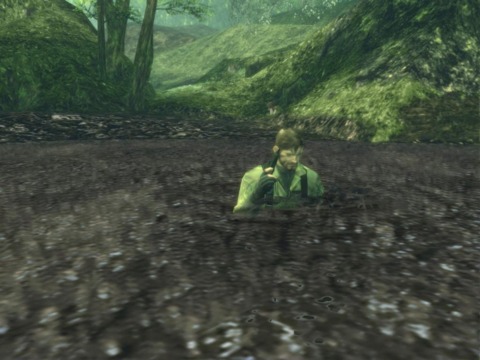
Can you level criticisms against Snake Eater? Of course! It's another game where Kojima read a few interesting articles about some geopolitical topics and decided he should blend them into a story which also has a guy who has to go dooky real bad, yall. The presence of The Boss as a Strong Female Character belies its broad, shitty treatment of women (a conversation which should include The Boss as well). It has a kitchen sink approach to the Dualshock 2(tm) controller which occasionally asks you to do things that would not make sense in any other video game. The game quite literally makes a goof on itself for having a ladder sequence go on for comically too long, and that is the capstone to a middle of the game that can at times be a bit sparse. I ultimately grew pretty sick and tired of adjusting my camouflage and eating them titular snakes, or more specifically the menu fiddlefuckery that these require.
For me, a lot of these issues are eclipsed by a series of some of the most engaging boss encounters I've played, culminating in a dang masterpiece of the medium. These fights are moments in video game time, a few of them worthy of enshrining in a pantheon of Cool Boss Fights. Highlights would have to include your encounter with Ocelot and his stupid goddamn revolvers, the (optional!) war of stealth attrition with The End, and the final encounter with The Boss in all of its pageantry. Allowing the game to linger on the shot as long as you are willing to put off pulling the trigger to end things is just a five star ten out of ten molto bene moment which, even if it didn't invent it specifically, makes every try at such a scene afterwards feel like a cheap copy.
Also tying this ludicrous fiction into the rest of the twentieth century was kinda cool! The series began on the MSX with Kojima doing a little exploration of late 1980s South African border conflict stuff he probably saw on the news at some point, and while the other games in the series had pointed back through time, this grounds the whole fiction in pre-Second World War events which are also codswaddle. I dunno, I have a history degree and sometimes I like when something shows me a picture of a thing from 1946 and I can say "Hey that's familiar!", is that so bad?
I can't wait to get Metal Gear Solid 4 done with this year so I can more or less retire my PlayStation 3(tm).
4. Yakuza 0
If you want to get me to like your game, one of the cheat codes you can use is to put Space Harrier in there as a playable game.
This is another game which has some history on this site and has also been praised widely and recently, so tooting its horn here with too much enthusiasm seems as self-serving and redundant as it was about Metal Gear Solid 3 a few minutes ago. Nevertheless, these posts must be written. And in a similar vein, this game must be played.
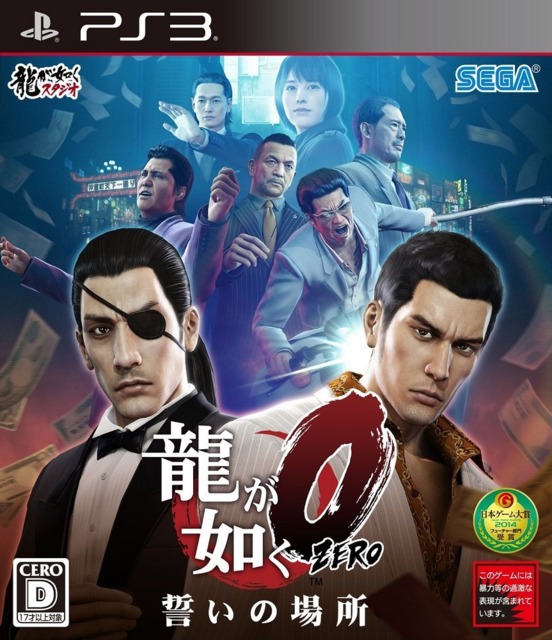
My prior experience with the Ryu ga GoKuz-A Dragon series amounts to starting Yakuza 4 (via PlayStation Plus(tm)), watching the plot summaries for the previous three games, getting in some shogi, and finishing the first chapter. I enjoyed that. I also put it down. Yakuza 0 is not a game I put down, at least not for very long, because it managed to sink several little hooks into me that kept me coming back. This game seems to be one of the longer entries in the series and I would wager it winds up skewed that way (at least on HowLongToBeat, long may it live) because so many optimization perverts like myself get deeply involved in the hostess club and real estate management aspects of this game. I did not come even within the ballpark of 100% clearing my save file, but I did defeat the Five Billionaires en route to uncovering the truth behind a garden variety back alley murder.
And what a story that is woven here. I was not expecting this game to explore Sino-Japanese foreign relations in the 1980s. Turns out that's a pretty major undercurrent in the story here, alongside the anticipated skullduggery and misdeeds of the titular Japanese crime families. Kazuma slowly grows from a fledgling foot soldier Just Goku, and they manage to make this evolution make sense. They also sow seeds for the ensuing games in the series, from what I think I know, and then there's basically a second game included which focuses on Goro and how he might have a little bit of decent human being buried beneath an, umm, bristly exterior and all of that scar tissue.
Just fightin' dudes is also a good time as well. Just taking a walk to the arcade to play Space Harrier again or talk to my mushroom buddy in the alley and suddenly a random encounter starts and I start Definitely Not Fucking Murdering people with fists and bicycle parts. You wind up doing a lot of ol' punchy kicky in this game and I was never not having a great time doing jazz fighting with either protagonist.
3. Ico
Rounding out the PlayStation 2(tm) games on this list is another game I did not play on the PlayStation 2(tm). Ico remains available digitally on the PlayStation 3(tm) as a standalone download, though the physical version includes Shadow of the Colossus alongside it (plus some exclusive themes? I need to buy this thing and get those before PSN gets dragged behind the shed and shot).
Ico is a combination very deliberate puzzle platformer and escort mission with no clear objective beyond "leave the place you are in". That people have taken these pieces and have constructed upon them fan theories which range from gender transition narrative to retellings of biblical history is remarkable for two reasons; that there's not a lot in there to build upon, and that the game had such a huge groundswell of support despite its pitiful marketing budget.
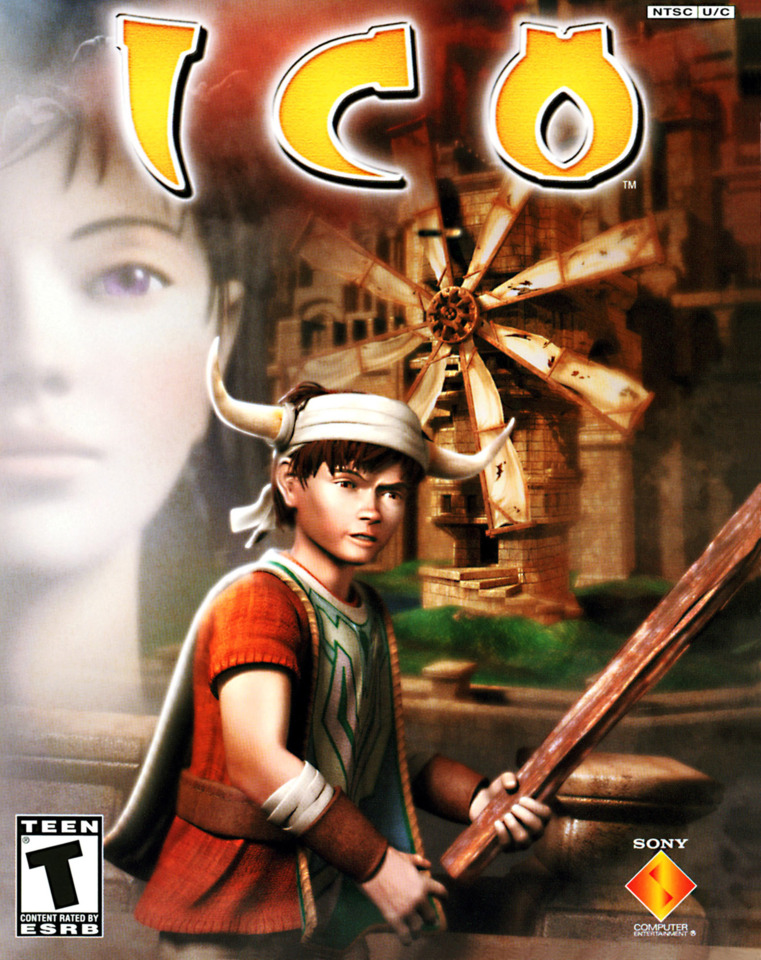
When I think about what Ico would look like with contemporary Sony meddling, it makes me wanna vom. And I don't vom. I have vommed once in the last eighteen years and I didn't know what was happening at first. Ico 2023 would have a painstakingly motion captured sequence of some parents having a heated, cuss filled debate over whether or not to abandon their child. It would have dozens of voice samples of Ico saying things like "Need to jump to that chain, but how?" and "I think there's more bombs back there" and "Yorda, I think you can climb up here now!" and other shit. The game is instead a largely silent experience beyond atmospheric sound and punctuations of music for world events. Honestly the game is just refreshiing in its unpatronizing approach to game design. It's not like you're being asked to do anything terribly puzzling, but there are moments where you'll scratch your head a bit. Not having some future television adaptation friendly character chiming in with the solution to your problem after five seconds of player inaction, while holding a Sony controller, feels great.
I remember this game existing in stores in 2001, the year we got a PlayStation 2(tm). Let me tell you how much the box art of this game, which would indicate it's the story of a nine year old boy who plans on beating the shit out of a windmill with a 2x4, did not sell me on this title. I was thirteen years old, and the game I was interested in was the one where I could hijack cars and raise hell across a little facsimile of New York City. That was supplemented in a year's time by the game where you hijacked motorcycles and raised hell across a little facsimile of Miami. It wasn't until my family moved to Hawaii and I was confronted with Katamari Damacy, the best game, that I likely developed the capacity to enjoy Ico. In some instances life doesn't give you something until you're ready for it.
2. The Legend of Zelda: A Link to the Past
Continuing the trend of games that feel strange to discuss as they've been pretty well turned over for decades, here's goddamn Link to the Past. I've had maybe a dozen running starts at this game over the last twenty years, but 2023 was the year I finally put it to bed. And in truly controversial fashion, I enjoyed it!
Rather than get too stuck in describing what is, again, one of the most celbrated video games ever made, Ill talk a bit about my memories of it. This is not a SNES game I remember seeing or playing on real hardware (a short list). My first time playing it was probably via emulation on my Sony Vaio(tm) desktop in high school. There was this shop in Hawaii called Jelly's, which has since moved and changed its name to Idea's, which is the correct punctuation, and they sold me about half of the vinyl records in my collection between 2003 and 2006. They also sold video games. I remember seeing a lot of NES and SNES games for between $5 and $10, including A Link to the Past. Didn't pick it up though. I wound up buying my copy after being moved back to West Texas. It was in a skate shop that also sold assorted video game shit, and my copy was $6. The prices at which you could get stuff like mainline Zelda games twenty years ago were wild.
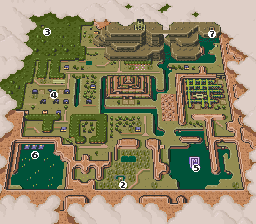
I'm not sure if the copy I have now is the copy I bought then, but I do know that the copy I have is the second SNES cartridge I ever gave a CR2032 battery swap job. The saves that were in RAM survived the job. I am pretty sure that game has a save which is as far as the Agahnim fight. That's where most of my runs at this game have died over the years. Not because it's some wild difficulty spike or anything. I think I had just had my fill by that point. I also wasn't initially into the Light World/Dark World split mechanics, and if I'm honest I still find getting between the two maps frustrating. This was finally the playthrough where I accepted that the hassle in getting between worlds was kinda the point, that wanting to be able to get around both worlds faster is the friction that gets resolved over the course of the back two thirds of game as you slowly uncover more abilities and items. By the end of the game you feel pretty powerful, both with your gear and your knowledge of all the points in the world where you can transit back and forth.
So yes, big congratulations to one of the most acclaimed works in one of the most lauded franchies from one of the most ballyhooed developers in the medium. You're not even my favorite game on the SNES, and you're not even the best game I played to completion in 2023. But you're pretty special.
1. Panzer Dragoon Zwei
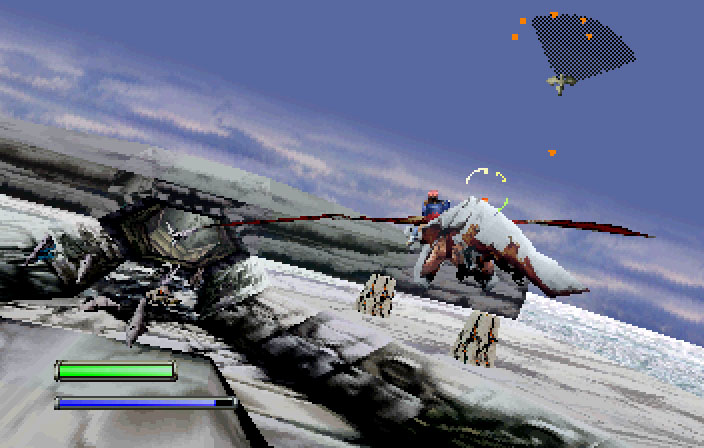
GOD IS IN HIS HEAVEN. ALL IS RIGHT WITH THE WORLD. A Sega game, made for the Sega Saturn, has earned its place at the top of this list. And what a goddamn fantastic game it is.
I first encountered a Sega Saturn in 1997, I think. Blockbuster(tm) in Minot, North Dakota had a service where you could rent consoles. My family was trying to choose between the platforms available at the time so we rented all three in succession. The game that we pulled with the Nintendo 64(tm) was Mario Kart 64. The Sony PlayStation(tm) came with Test Drive: Off Road. And buddy if you think that's a dubious choice, the game we rented with the Sega Saturn(tm) was The Incredible Hulk: The Pantheon Saga. I'll let you guess which console got bought ultimately based on on those titles.
It wasn't until much, much, much later in life that I became Sega curious, and that's owed in large part to Sonic's Ultimate Genesis Collection for the Xbox 360. Not that emulation wasn't an option to me by that point, but having al lthese games I had only glimpsed as a kid available in a very couch coop friendly format in college was rad. Dipping into this little compilation over and over again dragged me, step by step, down the road of Service Games.
Blahblahblah, I came into a bunch of Sega hardware over the years and a big chumbus of a CRT to experience these games as they were intended. And as 2023 was the year in which I was going to use this perverse stack of old hardware to experience Panzer Dragoon Saga, it was also the year where I needed to play through all of Panzer Dragoon Zwei to do a ridiculous save file transfer into Saga in order to experience every microscopic crumb of that game.
So I sat down with about 90 minutes, played all of Panzer Dragoon Zwei from start to finish, and I'm here to tell you it's a goddamn masterpiece. The game is a series of tightly scripted levels with a couple branching paths to allow for replayability, and if ever there was a game to replay this is it. Each level is tightly and deliberately assembled, with camera and musical cues so lovingly hand crafted that to call the game "cinematic" feels like an underhanded complement. Sony makes a lot of "cinematic" games that are alike in quality to mid-aughts cable television. Zwei feels a fucking statement from start to finish, because it is.
The game runs at a pretty solid 30 frames per second, a 50 percent improvement over its predecessor, and has widescreen support. For a Saturn game from 1996 that is absolutely bonkers. Those would be fun trivia bits if the gameplay wasn't up to snuff, but as mentioned this is the sequel to Panzer Dragoon which is the spiritual successor to one of the best games ever made, so you bet your ass the gameplay is on point. The systems innovation here is a very light progression system which you can influence by finding and transiting the alternate paths in a few of the levels, improving your dragons stats ever so slightly more by learning the "best" route through the game. If you're worried that not knowing all the routes will have you missing out on some of the best setpiece moments of the game's generation, don't. The bosses in the game work up from rad as hell retrofuturistic biomechanical devices to the coolest retrofuturistic biomechanical devices you've ever seen. I didn't really say it before, but some of the best moments of Panzer Dragoon Saga are specific references and throwbacks to events in Zwei.

This game is so good that its existence improves other good games around it. It's unbelievable. It's one of the best games I've played. I hope it becomes more readily accessible for more people at some point, through that delayed Forever Entertainment remake or some other means. I hope I play more games as good as Panzer Dragoon Zwei in the future. That would be great.
Anyway here's me and my wife and my dog and Santa please don't tell him Santa isn't real he's just a boy.




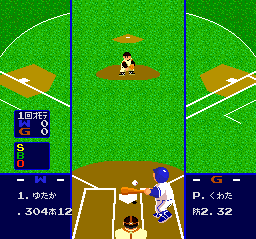
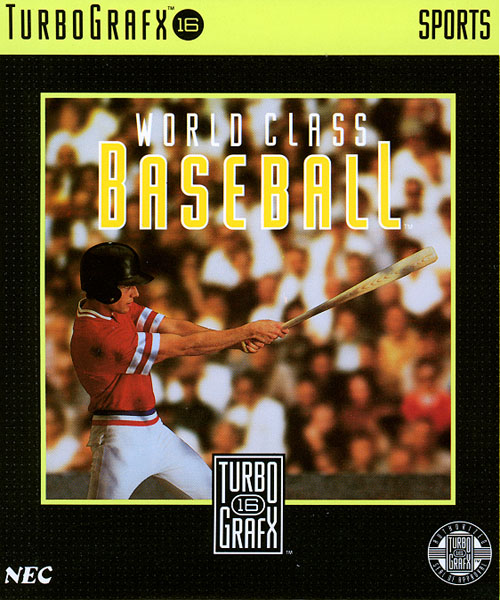
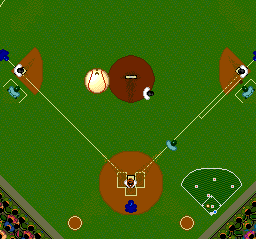
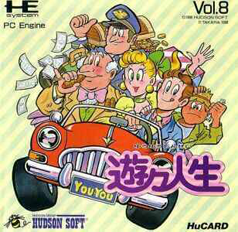
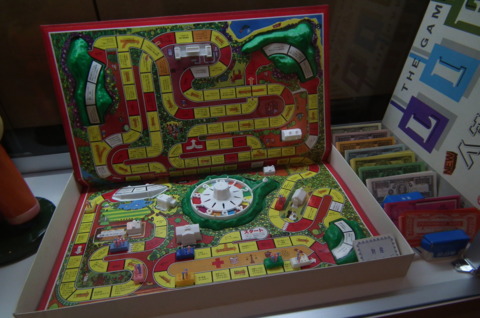
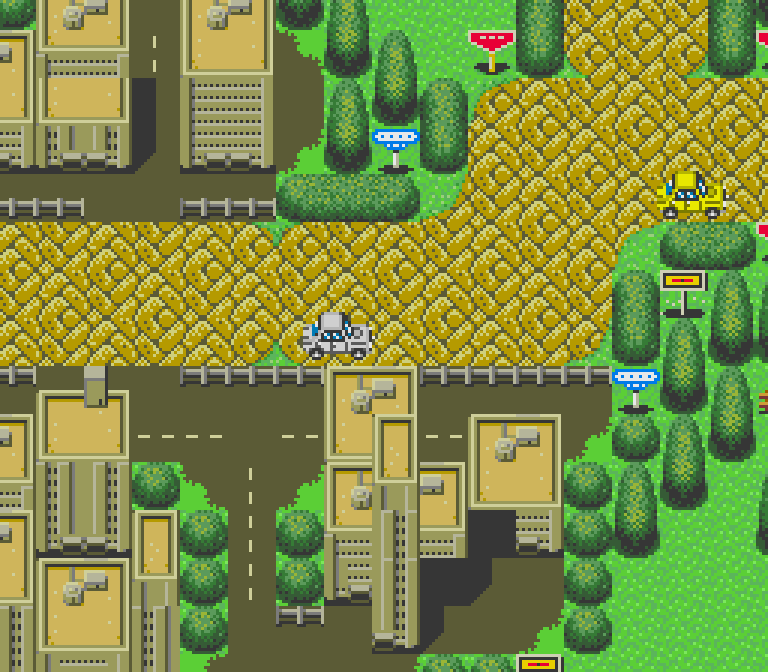
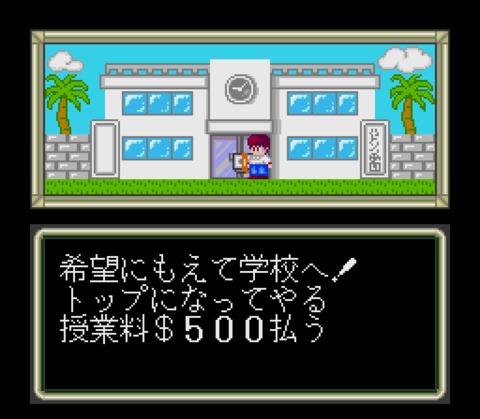
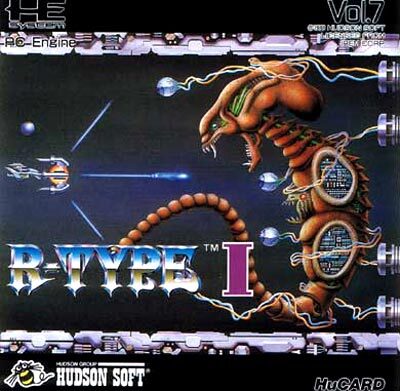
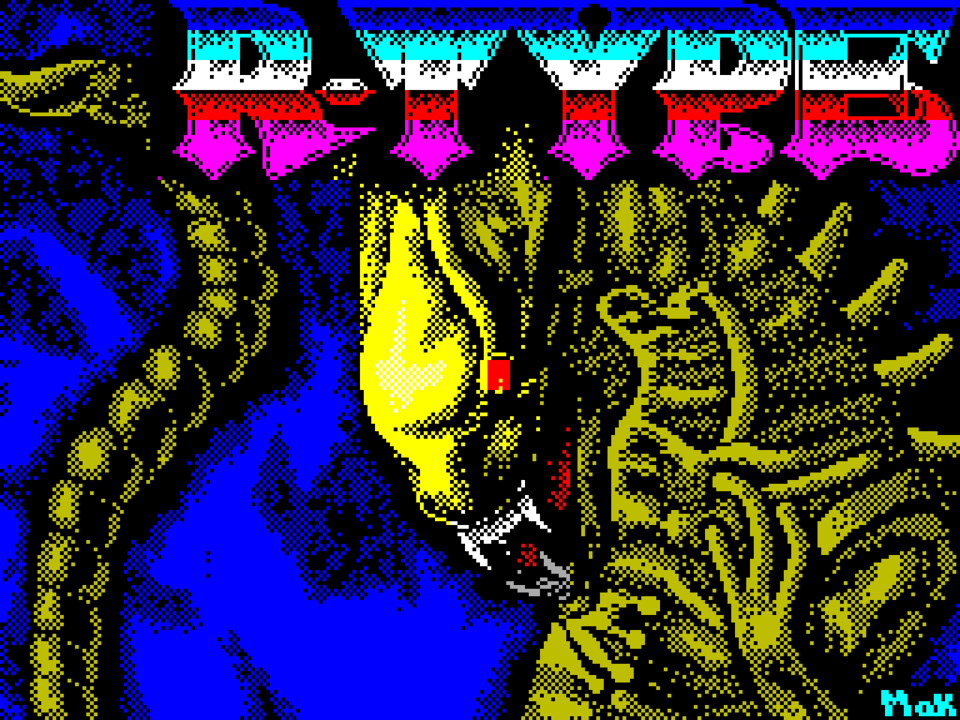
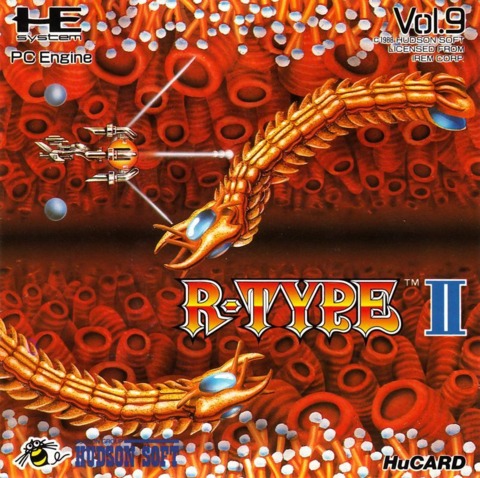
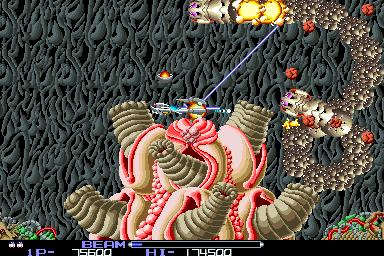
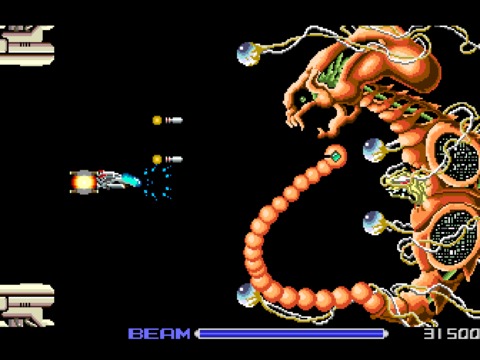
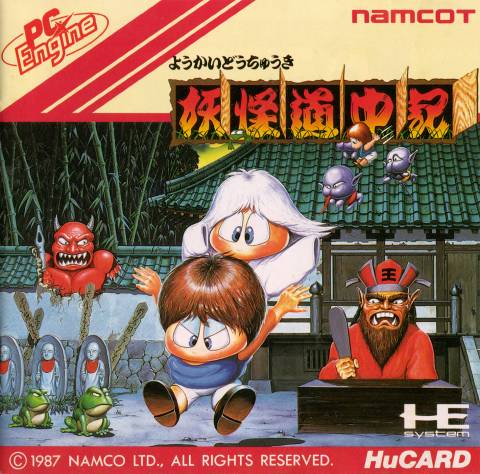
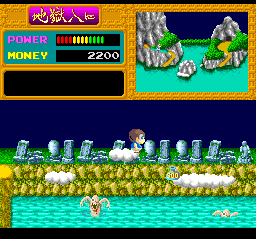
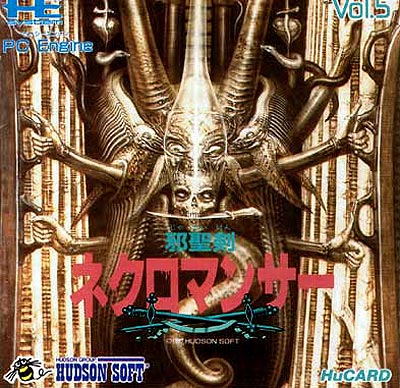
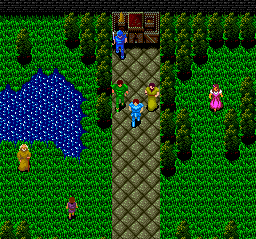
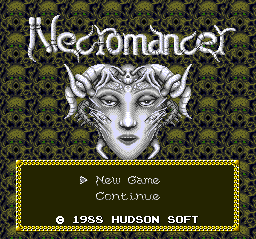
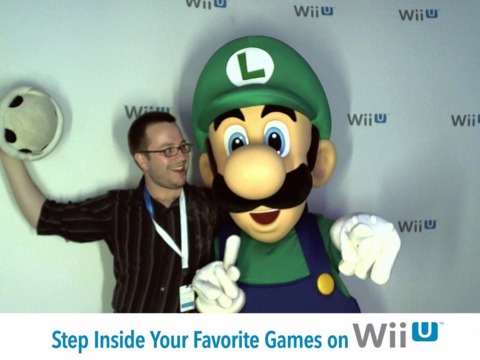
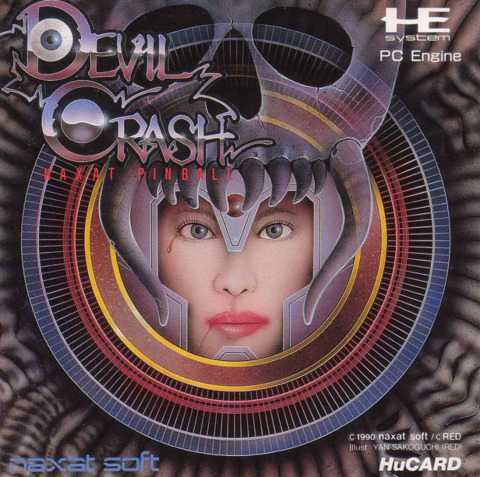
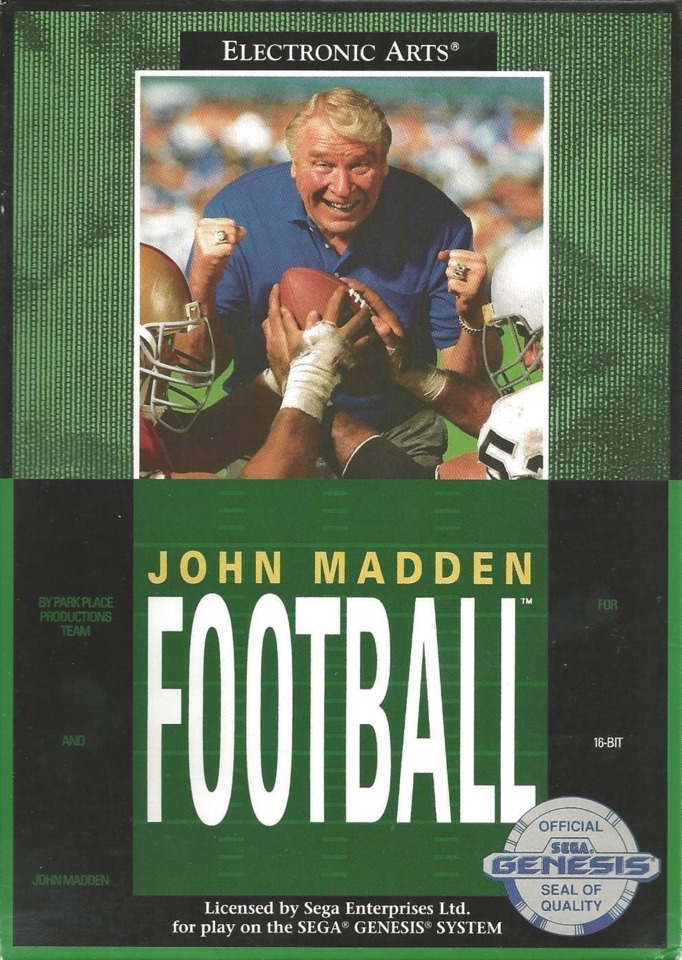
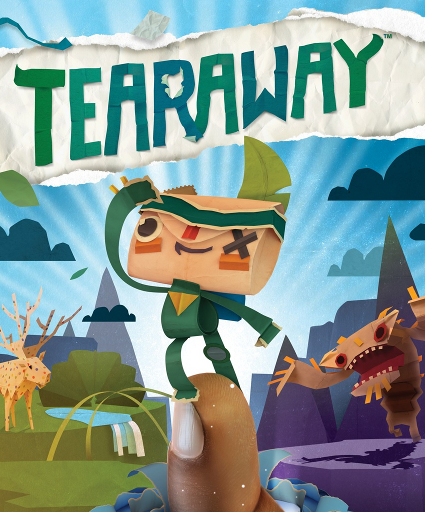
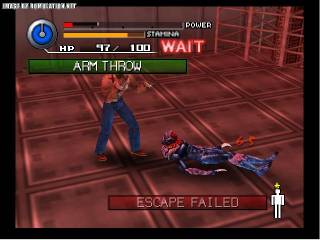
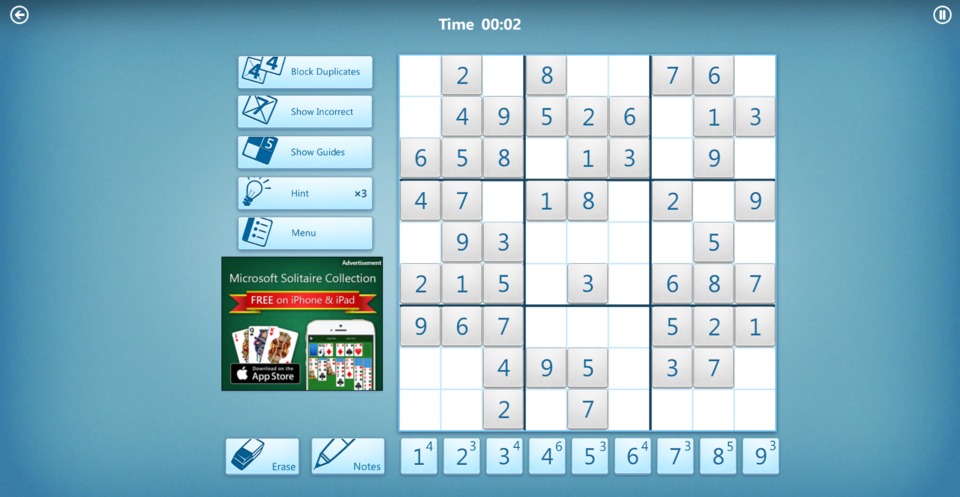
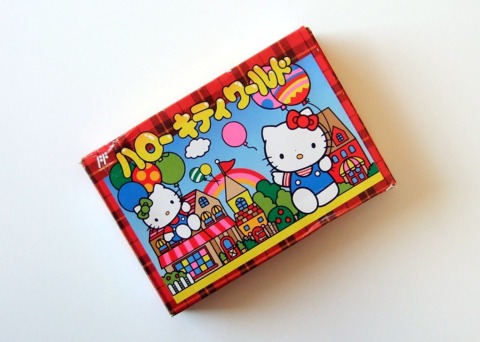
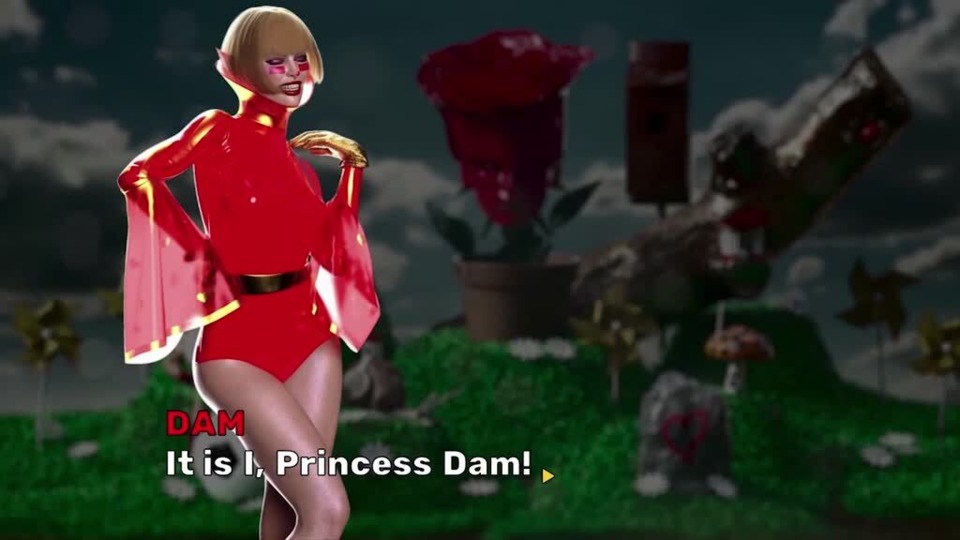
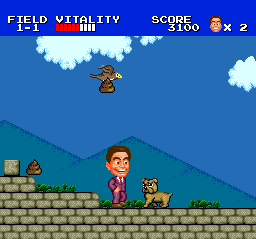
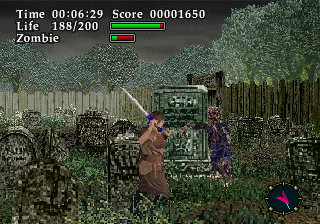
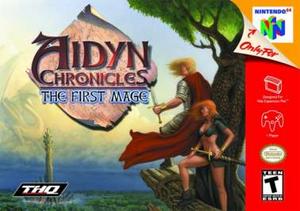
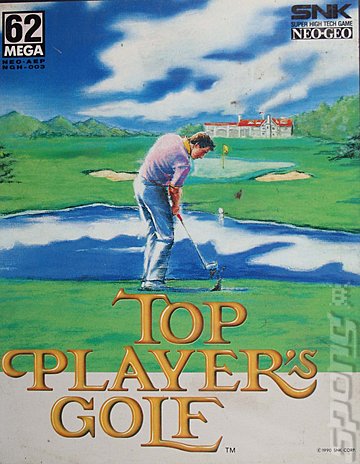
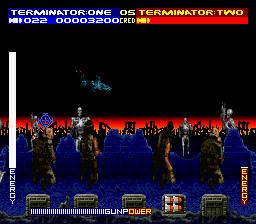

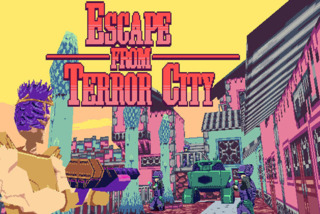
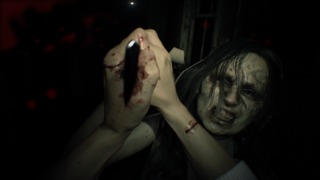
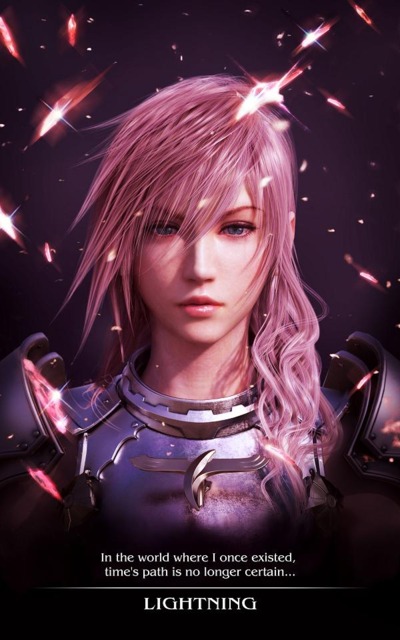
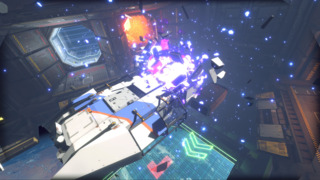
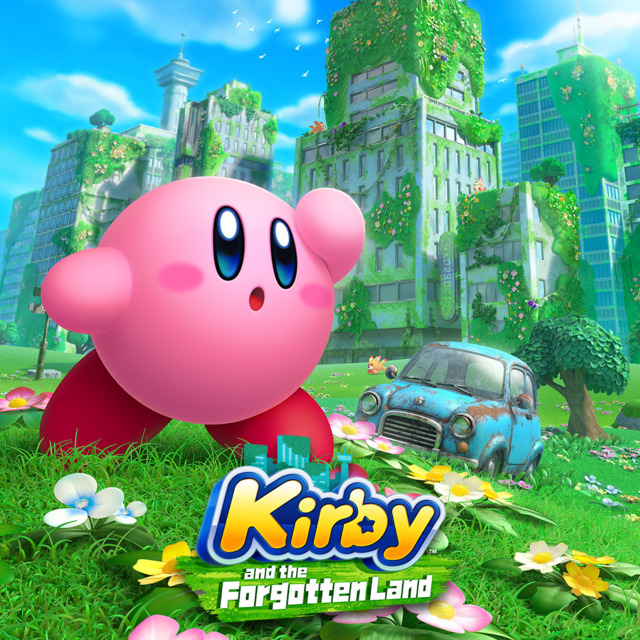
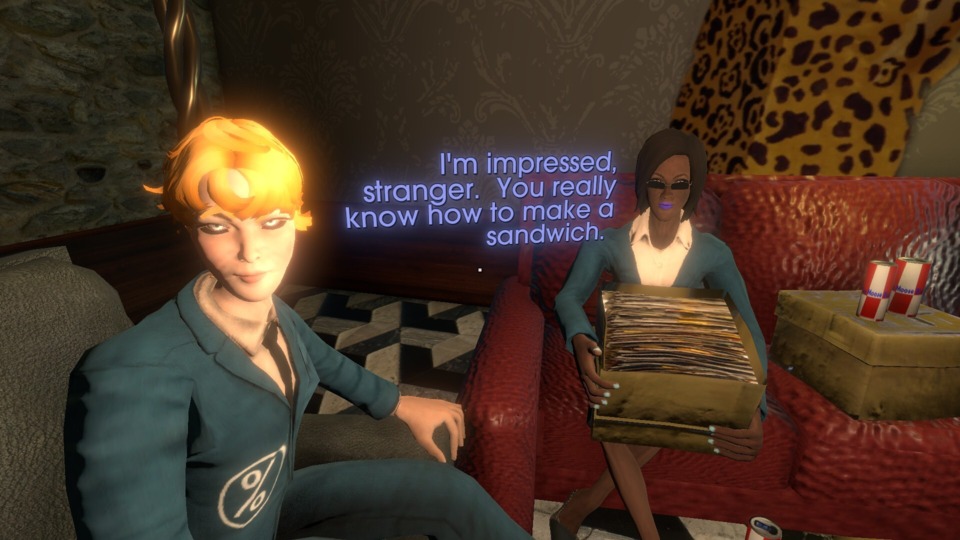
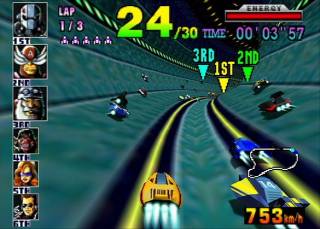
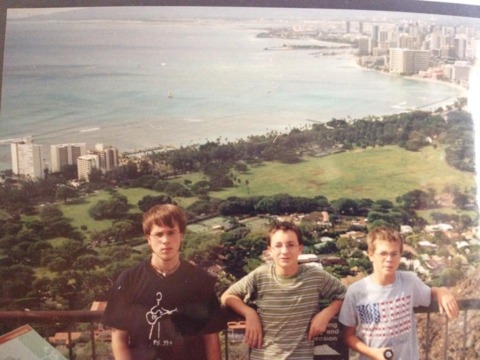
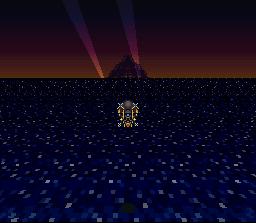




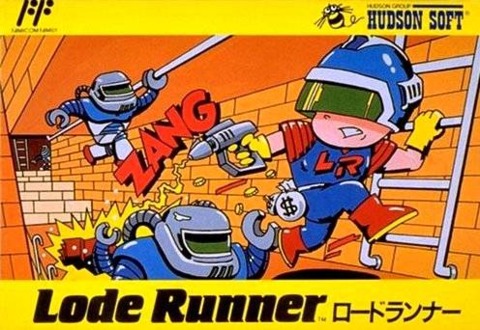
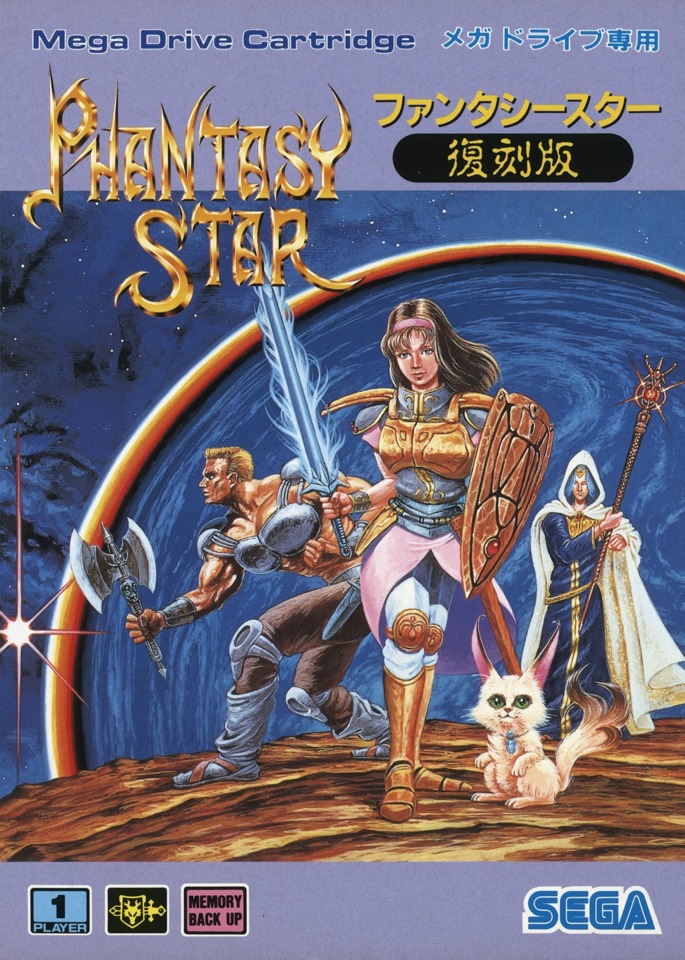
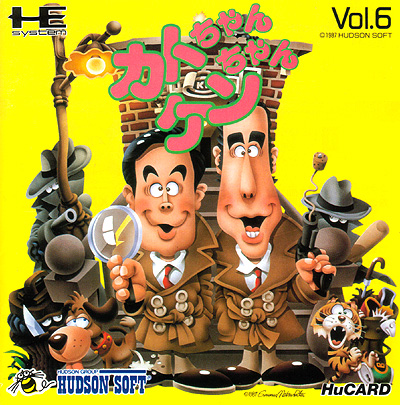




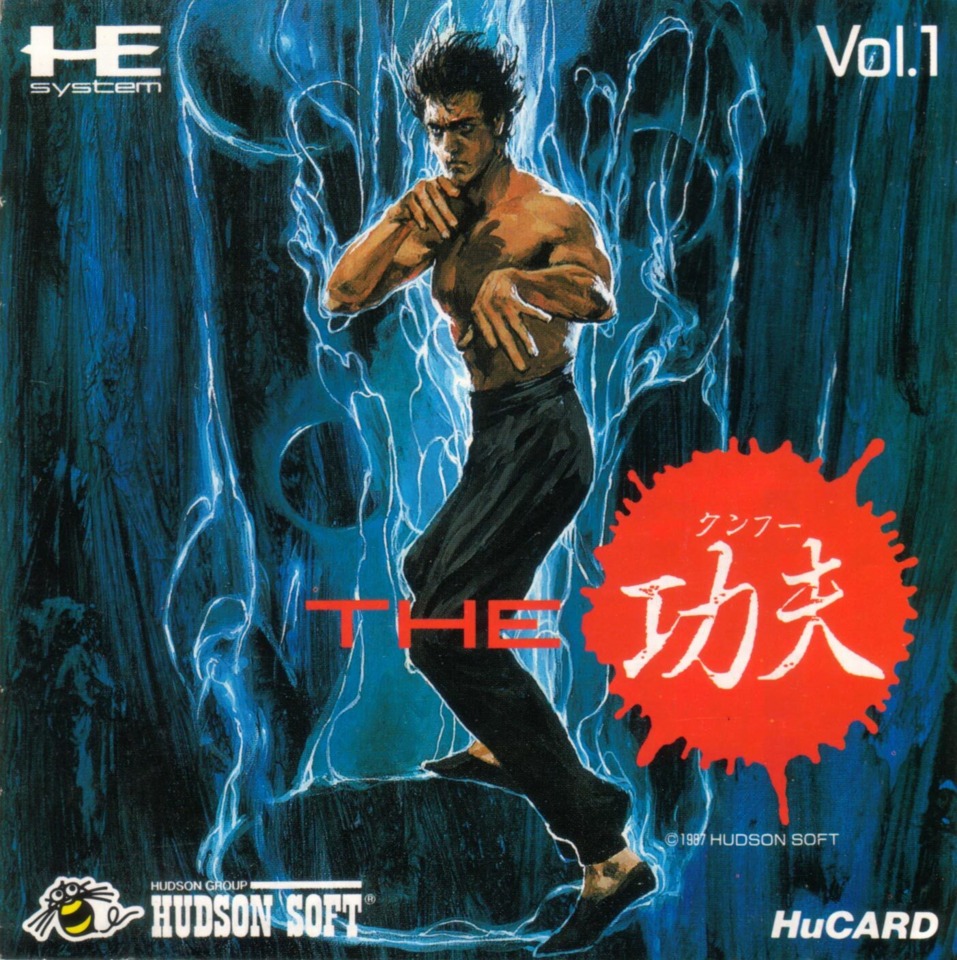
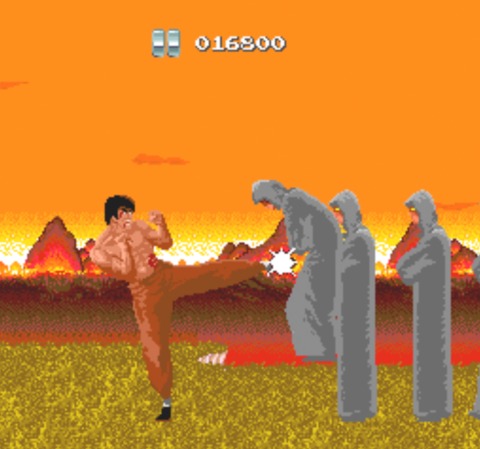
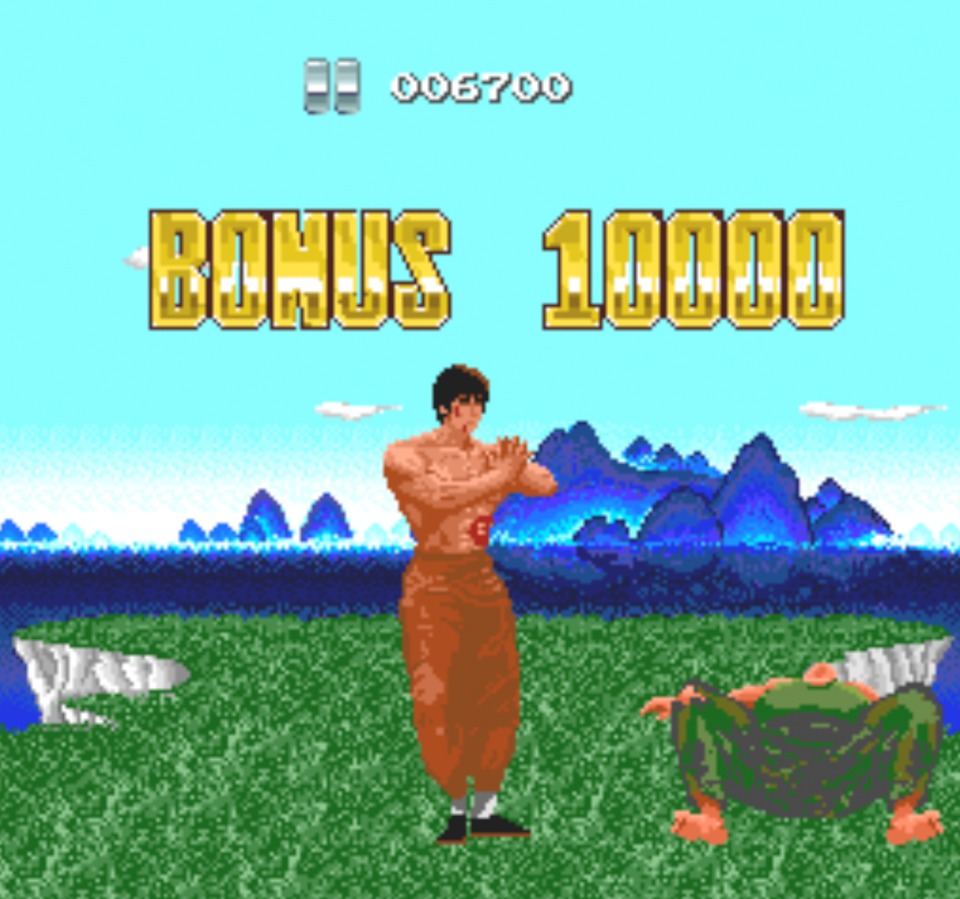
Log in to comment